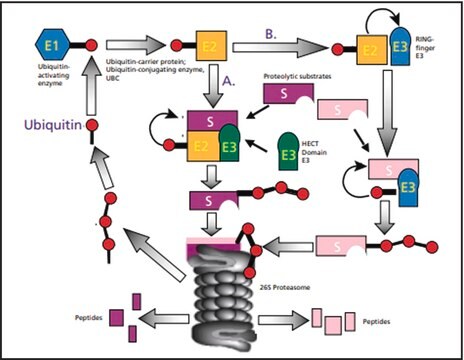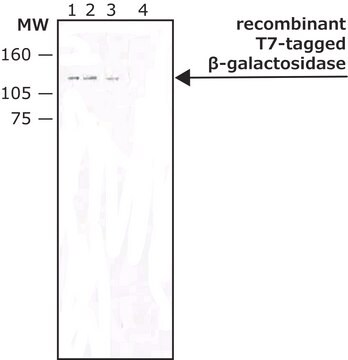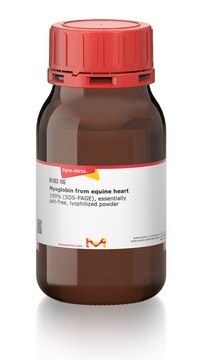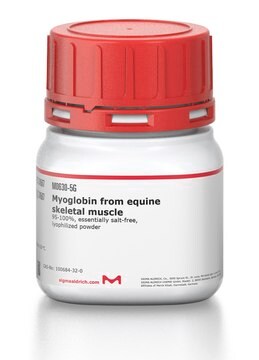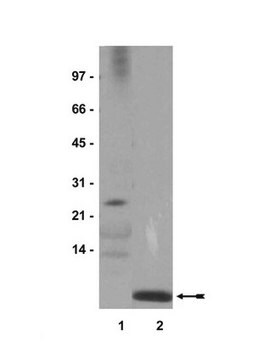U6253
Ubiquitin from bovine erythrocytes
BioUltra, ≥98% (SDS-PAGE), essentially salt-free, lyophilized powder
Sinônimo(s):
ATP-dependent proteolytic factor, Ub
About This Item
Produtos recomendados
fonte biológica
bovine erythrocytes
linha de produto
BioUltra
Ensaio
≥98% (SDS-PAGE)
Formulário
essentially salt-free, lyophilized powder
condição de armazenamento
(Tightly closed. Dry)
técnica(s)
western blot: suitable
Impurezas
salt, essentially free
solubilidade
water: 1 mg/mL, clear, colorless
nº de adesão UniProt
temperatura de armazenamento
2-8°C
Informações sobre genes
bovine ... LOC(101902760)
Procurando produtos similares? Visita Guia de comparação de produtos
Categorias relacionadas
Descrição geral
Ubiquitin is a highly conserved regulatory protein. It is found in all eukaryotic cells and is virtually identical across all forms of life including yeast, humans, and plants. ubiquitin structure contains seven Lys residues and an N-terminus, all of which are target sites for ubiquitination.
Aplicação
Ubiquitin from bovine erythrocytes can be used for in vitro ubiquitinylation assay. The product can also be used as a marker in western blotting.
Ações bioquímicas/fisiológicas
Nota de preparo
anticorpo
Código de classe de armazenamento
11 - Combustible Solids
Classe de risco de água (WGK)
WGK 3
Ponto de fulgor (°F)
Not applicable
Ponto de fulgor (°C)
Not applicable
Equipamento de proteção individual
Eyeshields, Gloves, type N95 (US)
Escolha uma das versões mais recentes:
Já possui este produto?
Encontre a documentação dos produtos que você adquiriu recentemente na biblioteca de documentos.
Os clientes também visualizaram
Nossa equipe de cientistas tem experiência em todas as áreas de pesquisa, incluindo Life Sciences, ciência de materiais, síntese química, cromatografia, química analítica e muitas outras.
Entre em contato com a assistência técnica
